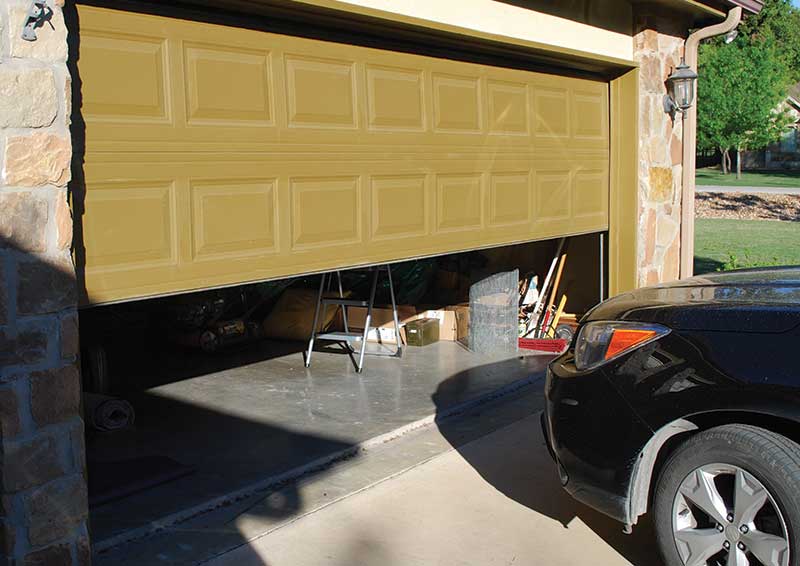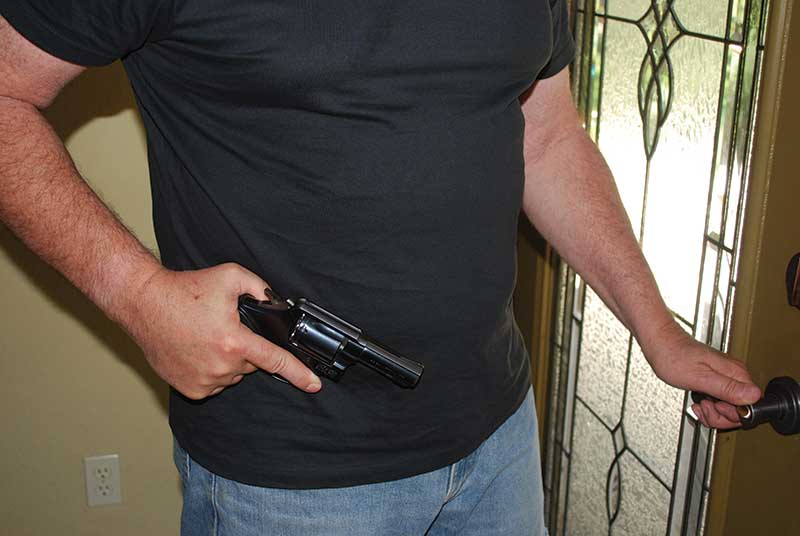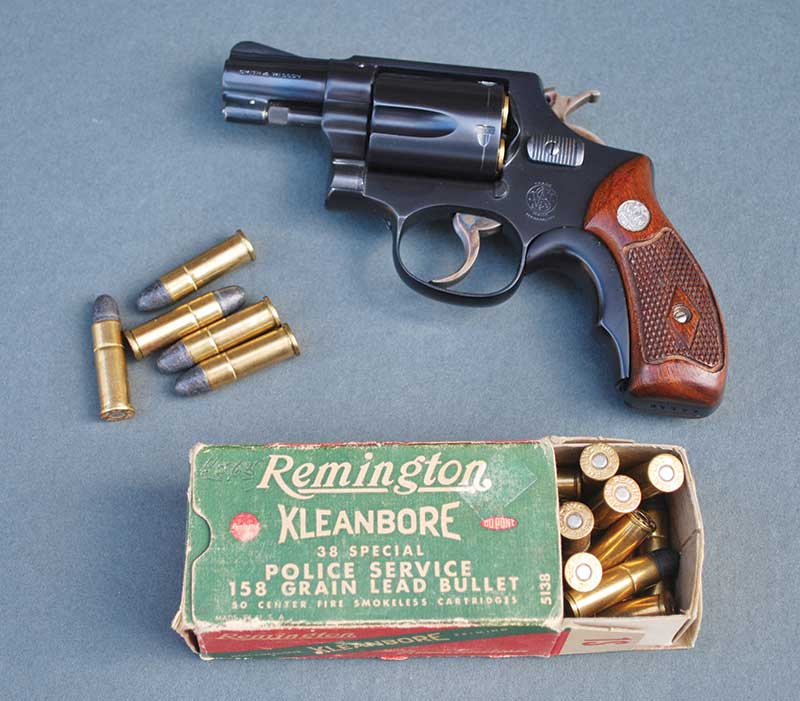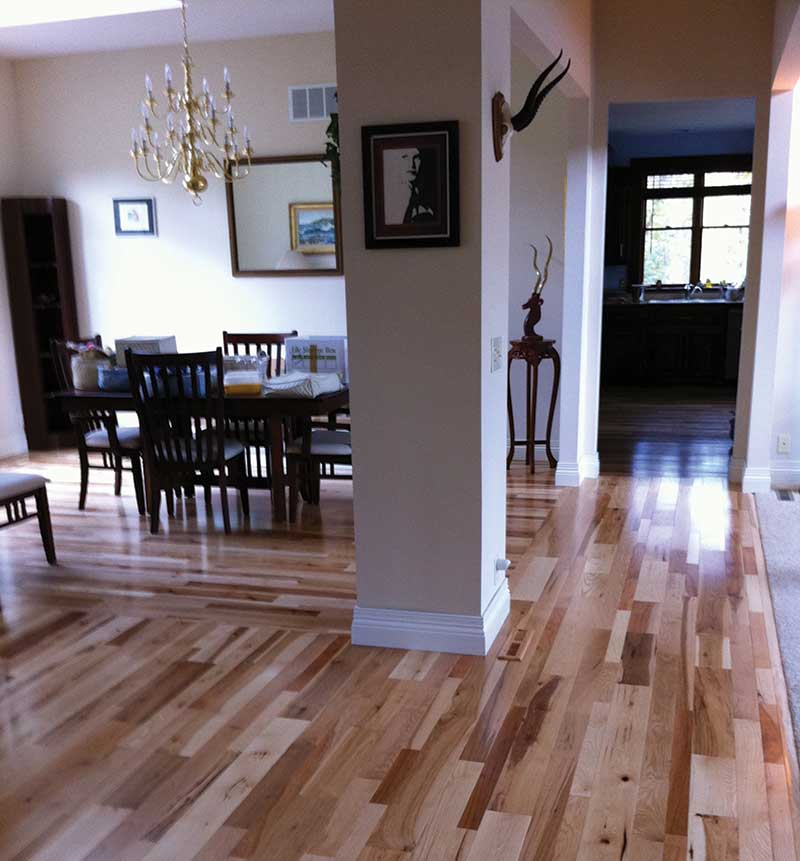Real-World Home Defense
When it comes to protecting your castle,
planning and research trumps guns and loads.
Because we live in the age of the internet and a 24-hour news cycle, local news can go national quickly. Police shootings, home invasion robberies and citizen confrontations with criminals are considered extremely newsworthy.
From reading the headlines today, you’d get the impression this country is awash in violent crime. Add in the overseas terrorist element and it gets scarier. And it is if you live in Baghdad or parts of Central America.
But here, in the United States, violent crime levels are at historically low levels. There has been a noticeable spike in serious crime lately, but criminal activity is still way less than just 25 years ago.
Now low crime rates are all well and good, unless you’re a victim. But approaching your particular situation analytically will keep you safe and spending to a minimum.
Before choosing a handgun or deciding on which kennel to buy a guard dog from, you need to know what the threat level is in your neighborhood. The preparations I take are different than someone living on an isolated ranch five miles from the Mexican border, a rural farm in Pennsylvania or in downtown Detroit. We gun people tend to argue handguns, calibers or ammo without seriously considering the possible threat. Your weapon should complement your tactical plan, based on the threat you may face.
Harden Your Home
Before looking at your arsenal, look at your home. Having a cool gun next to you at night isn’t much good if someone is able to quietly walk in on a sunny afternoon. You can’t build an impregnable fortress, but you can make your home difficult to penetrate. I like lots of lighting. One switch should bathe your home and yard in light.
Doors should have good deadbolts; sliding glass doors need a piece of wood in the track to keep the door from opening if the lock is compromised from the outside. Keep your windows closed and locked at night when you’re asleep or not at home. If it’s hot, turn on the AC.
I investigated dozens of entries that started with the suspect climbing in through an open window. Don’t stash keys around outside for access when you’ve misplaced yours. Leave your garage doors closed when you’re at home. This is basic stuff, but most people (including gun owners), ignore the easy fixes.
Never leave a gun unsecured while you’re away. I’ve talked with a few homeowners who faced their own gun upon returning from shopping. Always carry your handgun with you and be mentally prepared to use it upon your return. Look at your home critically before you walk in. Homeowners surprising uninvited people inside their home is more common than you’d think.
There is, of course, a fine line between paranoia and preparedness. Personally, I don’t have a loaded gun stashed in every room, and I don’t wear one around the house. I won’t live like that; if it’s that bad I’ll move.
Plan for what could happen based on your own research. Home-invasion robberies with multiple armed suspects don’t happen that often; when they do, the suspects usually know the victim very well. Stay away from narcotics trafficking, and you’ll probably avoid a frontal assault on your home.
Keeping an accessible handgun or two and being observant will take care of most any situation the average homeowner will be faced with. This is my take based on several hundred investigations I was involved in while working a large city in Southern California. And it’s how I deal with the possibility of an intrusion now.
A Tool for the Job
I’m not going to recommend a specific gun for you. You may already have one (or several) you like, shoot often and trust. I’ll just tell you what I’ve settled on based on my experience.
I have two .38 Special revolvers when I’m at home. One is usually my daily carry 2″, the other a larger K-Frame. The specific models may vary, but there are always two of them stashed in locations both wife and kids know about. I have lots of semi-auto pistols, but revolvers work well for our situation. They’re easy to use for someone who doesn’t shoot often. And there’s no complicated manual of arms to learn, unlike an M9 or 1911.
A revolver is perfect for an occasional shooter or someone only interested in home defense. Maintenance is low (especially if it’s stainless steel) and training is a snap. Open the cylinder and you’re clear. The long double-action trigger pull is simple and hard to have a negligent discharge with.
If I were on that ranch just north of the Mexican border I mentioned earlier, I’d have a loaded AR with several extra high-capacity magazines and more than a couple of pistols within reach. But a pair of revolvers will work well in an urban setting where your better half or the kids may be using them.
Firepower isn’t an issue; I can’t recall one shooting I’ve looked at that included a reload. Many times a weapon was produced and the suspect(s) fled without any rounds being fired.
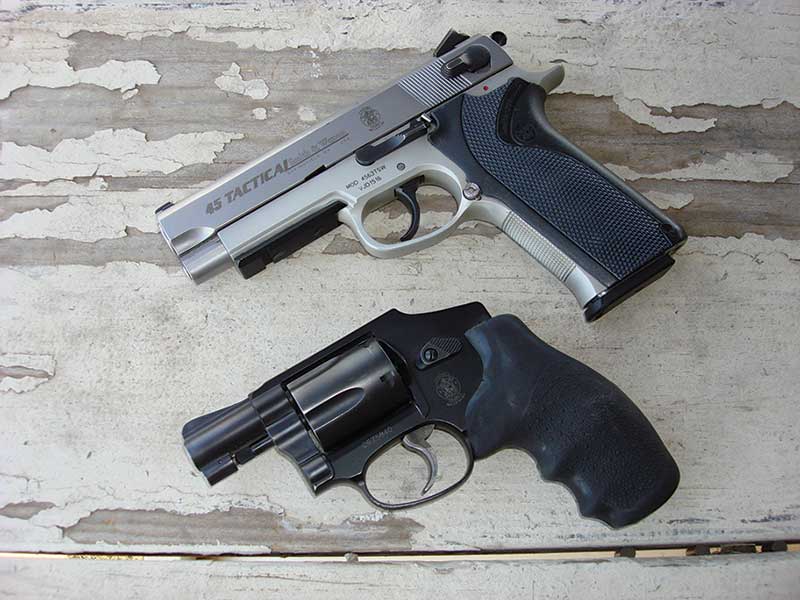
The S&W 1911.45 (top), while an excellent pistol, needs an operator who has
trained with it often in order to gain the advantages of its firepower and quicker
reloads. In a home defensive situation, the disadvantages of the S&W J-Frame
revolver — 5 or 6 rounds and slower reloading — aren’t really a factor.
Tactics to Consider
There are are a few points to consider which could make a difference if you find an uninvited guest in your residence. Always keep your handgun in the same place. You don’t want to be looking for it when the back door is crashing down.
Leave a dim light on somewhere centrally located in your house (I got into the habit of having one on with teenaged daughters coming home late or very early). Searching a blacked-out house, no matter how well you know it, is stupid. Lights also mean someone is home to a possible intruder. A small lamp in the living room might prevent a tragedy like shooting a family member by mistake. It happens.
You probably have a better chance of confronting a burglar in the daytime than at 3 a.m. — something to consider if you work nights and sleep in the daytime. I like to leave a car in the driveway — day or night — instead of pulling into the garage. Having a dog sleeping next to your bed is also a great idea … if you like dogs. Any dog is territorial and makes a great alarm system.
Lastly, don’t go outside. You’re giving up all the advantages you have defensively and opening yourself up to criminal prosecution if you do engage someone with deadly force. Property isn’t worth an armed confrontation; always let the bad guy come to you. The advantage stays with you — both in your home and later, in court.
Analyzing the Threat
For the most part, residents don’t have a clue about what’s going on in their neighborhood or town. Get to know your neighbors well and learn their routines and their vehicles. Watch their homes and who’s showing up. It’s not being nosey, just neighborly. Believe me, if you call the police about a stranger next door when the owners are away and it’s a burglar, the homeowner will be your friend for life.
It’s always good to be on a first-name relationship with the street cops who patrol your area. Talk to them about the crime in your neighborhood and city. Also engage the detectives who investigate burglaries, robberies and assaults. The stats aren’t secret, but you do have to ask.
I like to know about the kids in my neighborhood. Who are the problem children? Local teenagers commit a great percentage of daytime burglaries; skipping school and doing break-ins is a common juvenile pastime, usually in the early afternoon.
If you live in a mid-size or larger city, learn about the gangs that operate in it. Discover the parts of town to stay away from. You may be surprised to learn the apartment building close by is inhabited by some bad actors. The cops in your area can give you a heads-up on this.
Crime is also cyclical. Homicides and robberies go down in periods of foul weather and back up again in the summer. Look at your town’s problems and try to anticipate the trends. Formulate your defensive plan around what you know, not what you think or heard. Just buying a gun isn’t enough; it needs to be fitted into a greater plan of preparation and survival.

